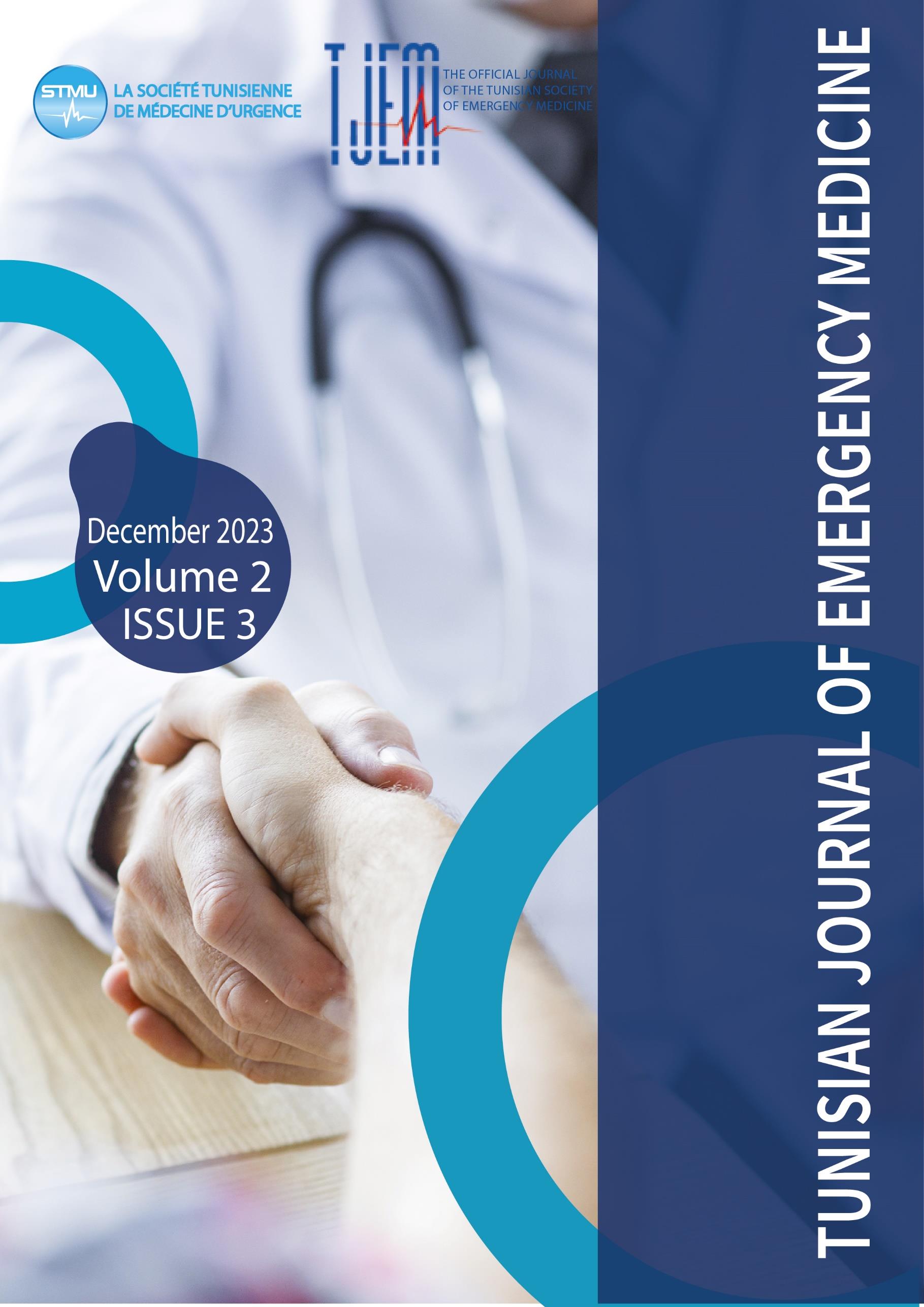Acute cerebral insults in the emergency department: epidemiology and predictive factors of highly sensitive troponin level’s increase
Olfa Djebbi, Mariem Ben Abdellaziz, Dhikra Hamdi, Lilia Lotfi, Ons Khrouf, Mehdi Ben Lassoued, Khaled Lamine
- Authors
-
-
olfa DJEBBI
,
-
- Abstract
-
Objectives : This study aimed to describe the clinical and epidemiological characteristics of acute neurological disease and to determinate the predictive factors of highly sensitive troponin elevation
Methods: this is a prospective and analytic study conducted at The Emergency Department of The Military Hospital of Tunis. It included 106 patients diagnosed with acute cerebral disease and having highly sensitive troponin measurement at admission over a period of 10 months. A multivariate analysis was conducted to identify the predictive factors of troponin elevation.
Results: The mean age of our patients was 62±19 years and the gender ratio was 1.4. Hypertension was the most common cardiovascular risk factor (46%). The most common acute neurological diseases were ischemic stroke (47%) followed by seizures (14%) and hemorrhagic stroke (13%). Thirty-six patients (35%) had a high troponin level, 18 patients (17%) had repolarization abnormalities and 8 patients (8%) had both troponin elevation and ST segment abnormalities. A high troponin level was found in 50% of patients with brain tumors, 47% of patients with seizures, 38% of patients with ischemic stroke and 33% patients with subarachnoid hemorrhage.
In this multivariate analysis, the independent predictive factors of troponin elevation in patients with acute neurological disease were: age greater than 65 (OR=2.75, CI: 2.801-5.456), diabetes (OR=1.47, CI: 1.546-3.956) and Glasgow Coma Scale (GCS) less than 15 (OR=0.53, CI: 2.213-4.329)
Conclusion: The troponin level was high in 35% of patients with acute neurological disease. Predictive factors of troponin elevation were: age greater than 65, diabetes, history of atrial fibrillation and a GCS under 15. - Downloads
- Published
- 30-12-2023
- Section
- Prospective study
- License
-
Copyright (c) 2023 Tunisian Journal of Emergency Medicine

This work is licensed under a Creative Commons Attribution-NonCommercial-ShareAlike 4.0 International License.


